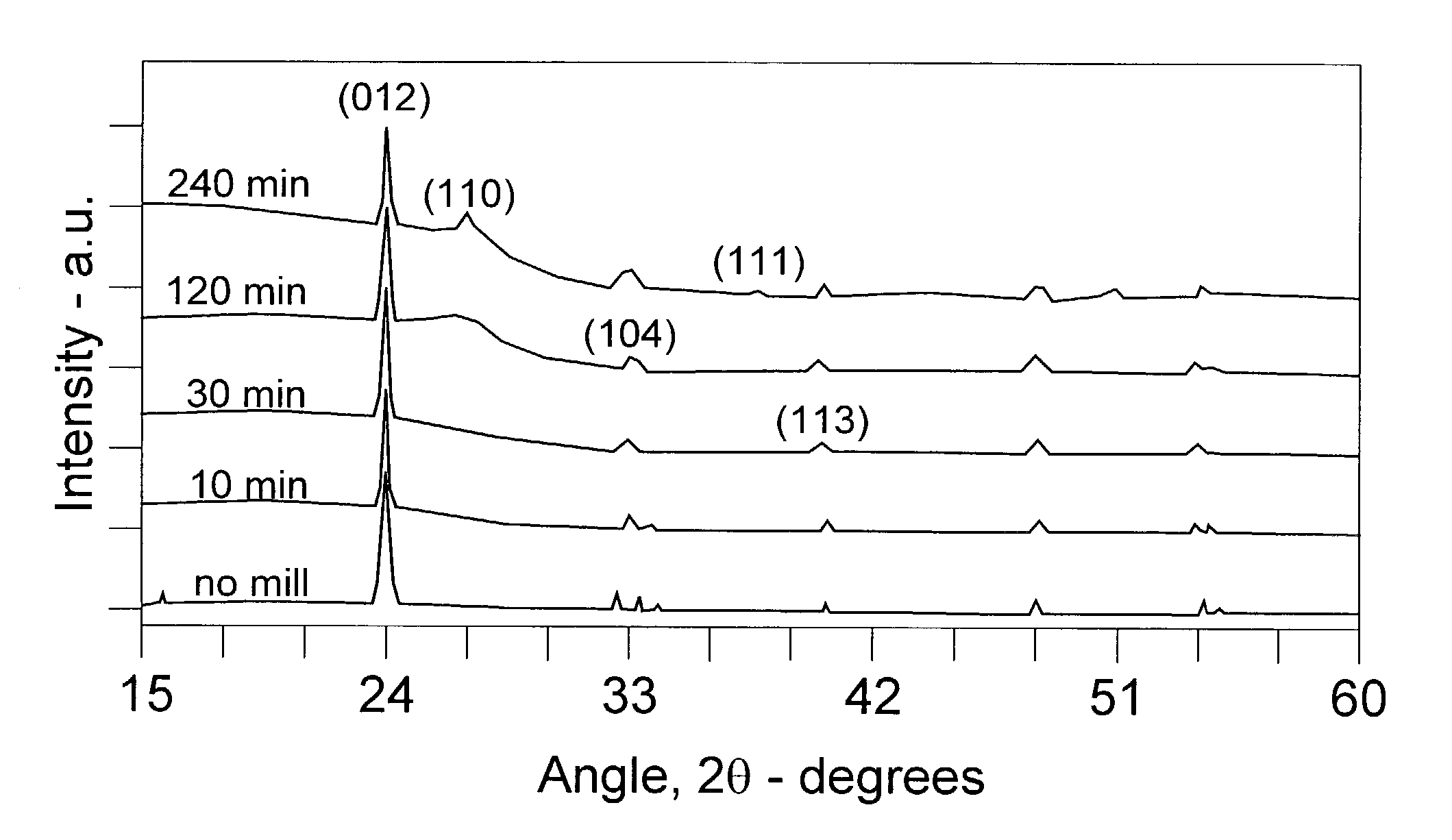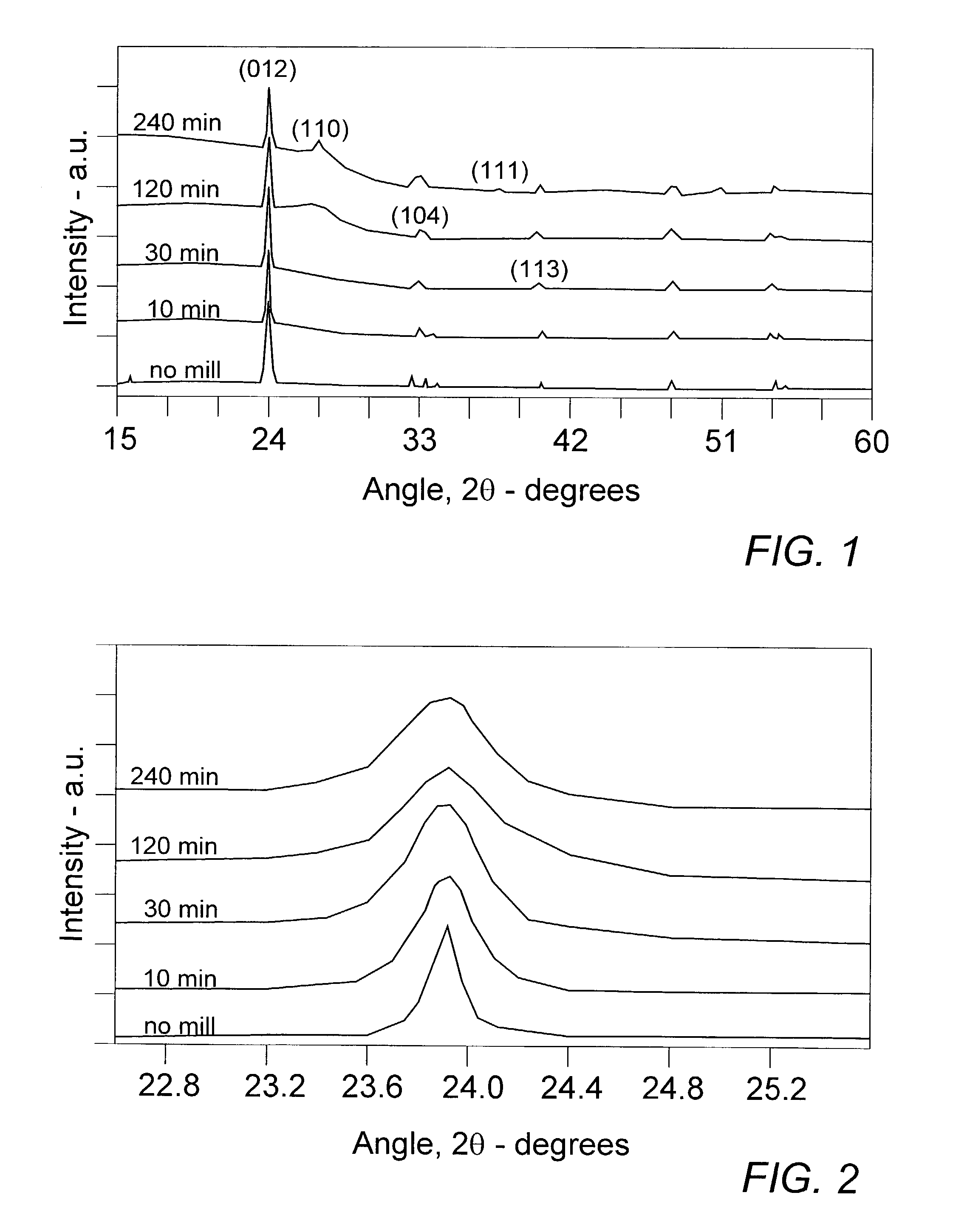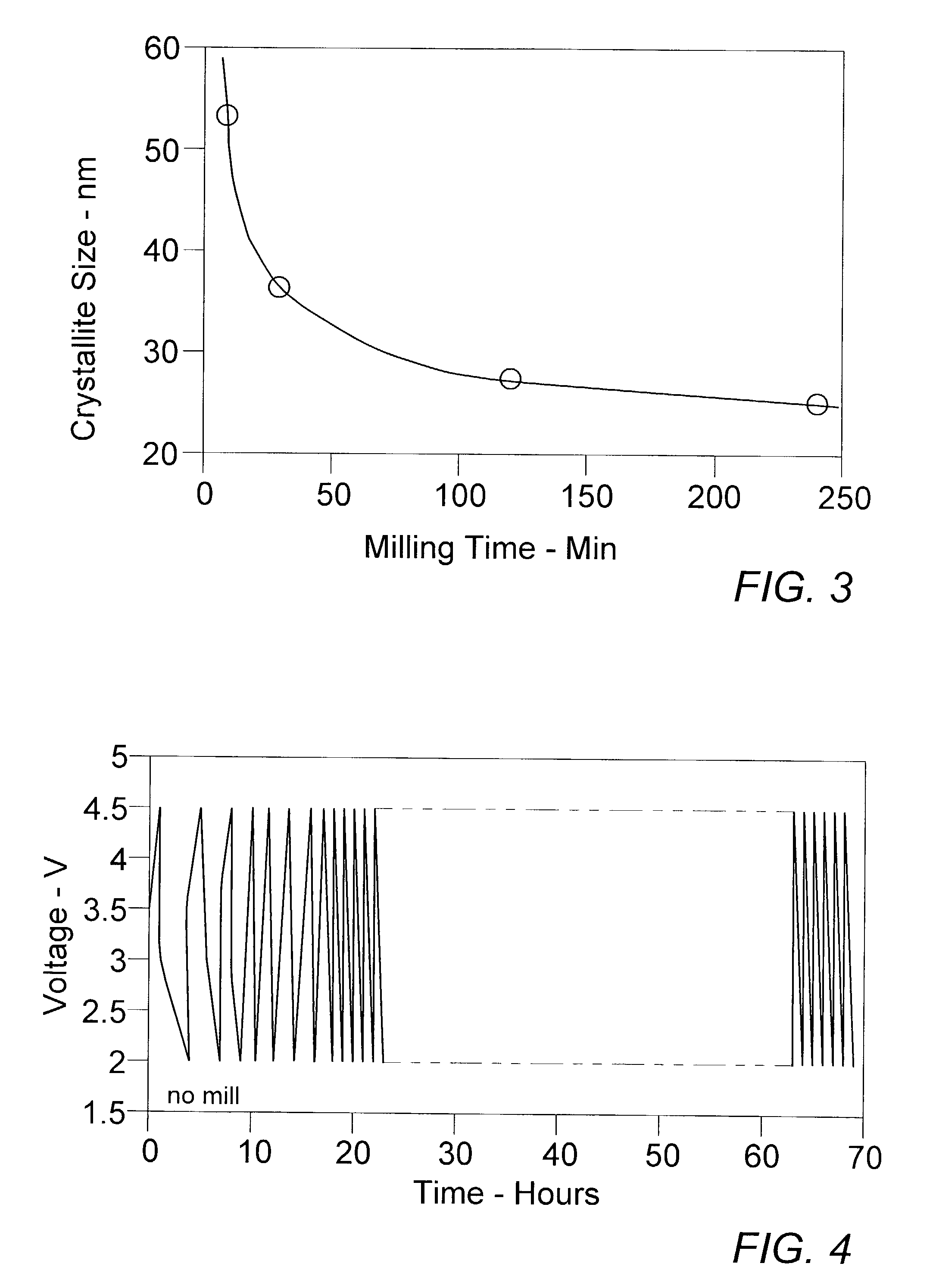Transition metal fluoride: carbon nanoamalgam rechargeable battery cell electrode material
a technology of carbon nanoamalgam and electrode material, which is applied in the direction of non-aqueous electrolyte cells, cell components, electrochemical generators, etc., can solve the problems of mathematical impairment of the specific capacity of the cell overall, and achieve the effects of stable and surprisingly high capacity, low cost, and desirable environmental compatibility
- Summary
- Abstract
- Description
- Claims
- Application Information
AI Technical Summary
Benefits of technology
Problems solved by technology
Method used
Image
Examples
example i
[0035]Charges of equal parts by weight of FeF3 and carbon black were milled in the high energy impact mill under a helium atmosphere for varying lengths of time before samples were extracted for structural and electrochemical characterization. As a basis for comparison, a measure of FeF3 was thoroughly mixed under shear grinding conditions in a mortar and pestle with an equal amount of carbon black to yield an electrode material mixture which duplicated in significant respects that of Arai et al., noted above, and is designated in the indicated test results and accompanying drawing as the “no mill” sample.
[0036]Samples of TMFC nanoamalgams and the base reference mixture were characterized in laboratory XRD apparatus to obtain the traces represented in FIG. 1. There the changes in crystalline compound structure are apparent from the “no mill” mixture of FeF3 and carbon through the initial formation of TMFC nanoamalgam at about 10 min milling to the more extensive reformation at about...
example ii
[0038]A series of TMFC nanoamalgams was prepared from combinations of 85 parts by weight of FeF3 and 15 parts of carbons of different composition and morphology. Exemplary carbon precursors utilized were an activated carbon (Norit) of microstructure dimension having a surface area of about 1700 m2 / g, a Super P conductive graphene chain carbon black (NMM Carbon), and an acid treated expanded graphite (Superior Graphite) having reduced particle size and partial exfoliation. Although some variations in the obtained TMFC nanoamalgam particle sizes were observed, as shown in FIG. 9, presumably as a result of the impact-tempering effect of the original carbon morphology, XRD and TEM examinations of these materials confirmed the characteristic nanostructure exhibited by the earlier sampled amalgams. Electrochemical characterization of the TMFC nanoamalgams was carried out with lithium cells prepared in the foregoing manner and comprising LiPF6 / EC:DMC electrolyte. These cells were tested ov...
example iii
[0039]In order to evaluate the novel TMFC nanoamalgam electrode materials of the present invention under cycling conditions more consistent with practical usage, a 60 min milled 85:15 FeF3:activated carbon nanoamalgam was prepared and used to fabricate a test cells as in Ex. II. The cells were then cycled repeatedly at 22° C. between 4.5 and 2.5 V at rates of 22.7 mA / g (C / 5) and 68.18 mA / g (C / 2.5), respectively, after two initializing cycles at 7.58 mA / g. Resulting exceptionally stable discharge capacities, as shown in FIG. 11, remained in the 150 mAh / g range.
PUM
| Property | Measurement | Unit |
|---|---|---|
| crystallite size | aaaaa | aaaaa |
| particle size | aaaaa | aaaaa |
| particle size | aaaaa | aaaaa |
Abstract
Description
Claims
Application Information
 Login to View More
Login to View More - R&D
- Intellectual Property
- Life Sciences
- Materials
- Tech Scout
- Unparalleled Data Quality
- Higher Quality Content
- 60% Fewer Hallucinations
Browse by: Latest US Patents, China's latest patents, Technical Efficacy Thesaurus, Application Domain, Technology Topic, Popular Technical Reports.
© 2025 PatSnap. All rights reserved.Legal|Privacy policy|Modern Slavery Act Transparency Statement|Sitemap|About US| Contact US: help@patsnap.com



